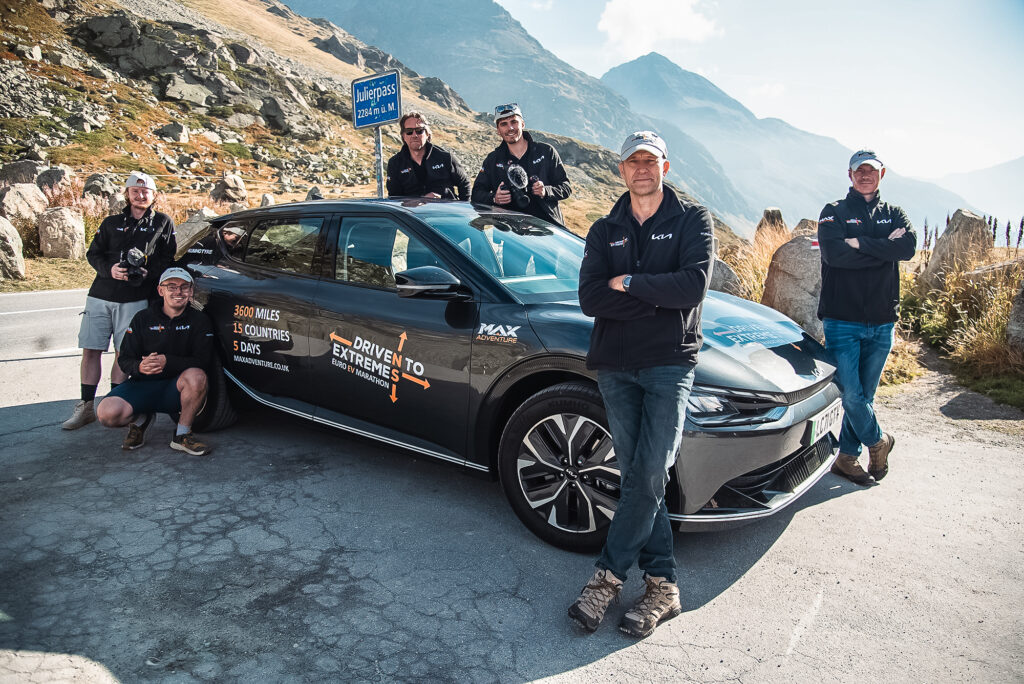The Max Adventure team have driven a Kia EV6 from Oslo to Lisbon, covering 3,174 miles in a little over 89 hours or 3.75 days.
With a WLTP combined range of up to 328 miles on a single charge, the all-electric vehicle used Kia’s fast charging technology and covered 16 countries to complete the Driven To Extremes Euro EV Marathon, beating the original target of 120 hours.
The team used 800V rapid-charging technology while ‘Kia Charge’ helped cut the journey time. The ‘Kia Charge’ service lets EV owners access more than 400,000 public chargers across Europe from a single account with a single RFID card. This provided the team with rapid charging locations along its route, enabling them to get back on the road as quickly as possible after each stop.
The ‘Driven to Extremes Euro EV Marathon’ was inspired by the adventure undertaken by racing legend Stirling Moss in 1952. A publicity stunt to promote the then-new Humber Super Snipe 4-door saloon, the 50s trip involved the legendary racing driver, along with three of his ‘fast friends’, visiting 15 European countries in less than five days.
The Kia challenge was designed to show how easy it is to cover huge distances in a short time using a standard EV and existing charging infrastructure, according to Max Adventure.
The team improved on the time set by Sir Stirling Moss by 47 minutes. It is understood to be the first time the route has been attempted in a fully electric vehicle.
“This wasn’t about trying to beat Sir Stirling, but demonstrate that mammoth trans-continental drives in an EV can easily be undertaken here and now in 2022,” said Project Leader Mac Mackenney.
The team made detours to honour Sir Stirling along the way. This included the 7,500-foot high Julier Pass in the Swiss Alps, part of the original 1952 route, and Monaco, which allowed the team to drive the historic Grand Prix circuit.
The team departed on Sunday, Sept. 5 at 15:00 and crossed the border into Portugal, at Vilar Formoso on Thursday, Sept. 8 at 08:12. This marked the start and stop point for the timing – as per the original drive in 1952. The entire trip was tracked by project partner YB Tracking, and the route trace is available at HERE.
